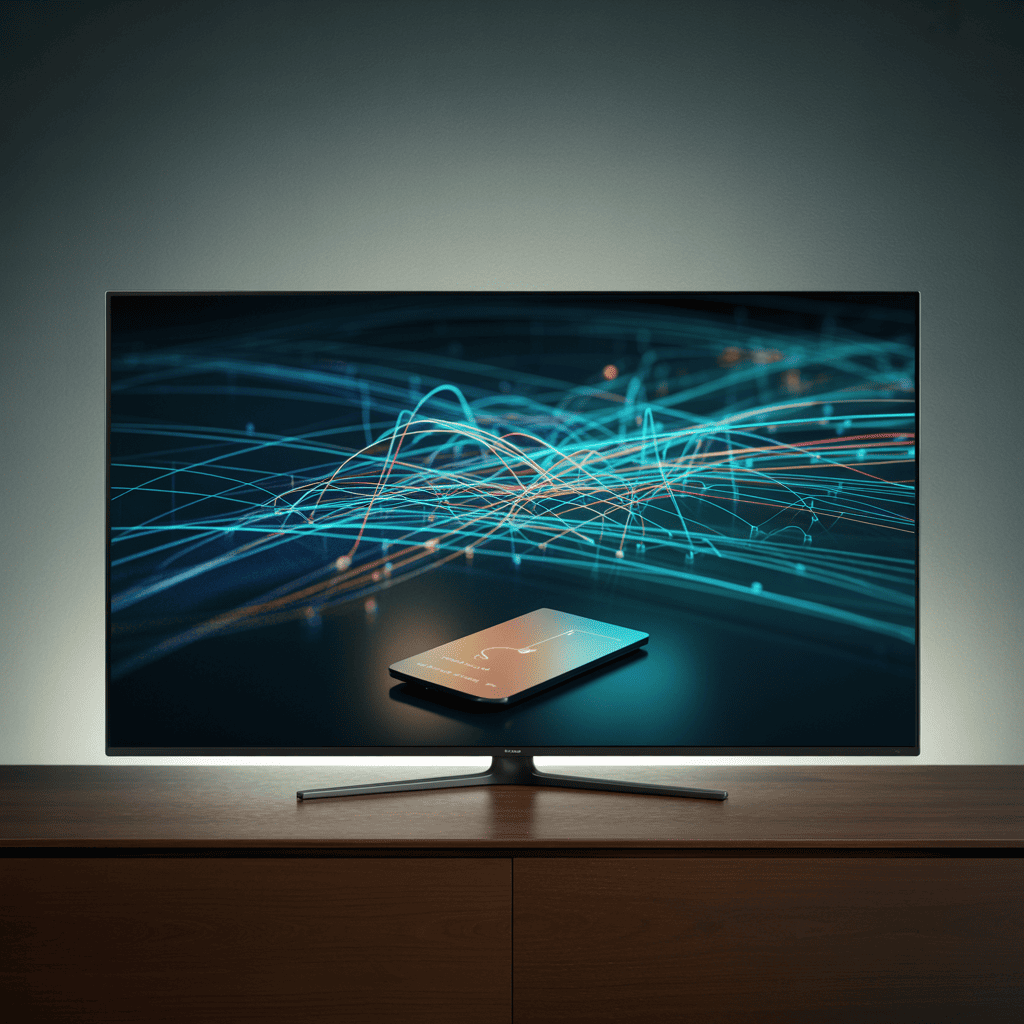Imagine launching an advertising campaign that doesn't just run—it learns. Every click, conversion, and customer interaction becomes a lesson that makes your marketing smarter and more effective over time. This isn't science fiction; it's how modern performance marketing works when you combine the right technology with strategic thinking.
For businesses across Europe—from Estonia's innovative startups to established brands throughout the Baltics and beyond—self-optimizing campaigns represent a fundamental shift in how advertising works. Instead of setting up campaigns and hoping for the best, you're building systems that continuously improve themselves, learning what works and automatically adjusting to maximize your return on investment.
From Set-It-and-Forget-It to Always Getting Better
Traditional advertising followed a simple pattern: you'd plan a campaign, launch it, monitor the results, and then manually adjust based on what you learned. While this approach could work, it had serious limitations. By the time you noticed a problem or opportunity, you'd already spent budget on underperforming ads. And with multiple campaigns running across different channels, keeping everything optimized meant constant attention from your marketing team.
Smart campaign systems flip this model entirely. Instead of waiting for you to notice trends and make changes, these platforms continuously analyze performance data and make adjustments automatically. They test different approaches, identify what's working best, and shift resources toward the most effective strategies—all in real time, without requiring constant oversight. Your campaigns literally get smarter every day they run.
Learning From Every Interaction
The power of self-optimizing campaigns comes from their ability to learn from vast amounts of data that would be impossible for humans to process manually. Every time someone sees your ad, clicks through to your website, or completes a purchase, the system is gathering insights about what works and what doesn't.
These insights go far beyond simple metrics like click-through rates. The system learns which messages resonate with different audience segments, what times of day generate the best results, which creative elements drive engagement, and countless other patterns that influence campaign performance. This continuous learning process means your campaigns become more effective the longer they run, building on accumulated knowledge to deliver better and better results.
What Smart Campaigns Learn
- Audience Preferences: Which customer segments respond best to different messages, offers, and creative approaches, allowing more precise targeting over time.
- Timing Patterns: When your ideal customers are most likely to engage and convert, enabling optimal ad delivery scheduling.
- Creative Performance: Which headlines, images, and calls-to-action generate the strongest response from different audience groups.
- Budget Efficiency: Where your advertising spend delivers the highest return, automatically shifting resources to the most profitable opportunities.
- Market Dynamics: How seasonal trends, competitor activity, and external factors affect campaign performance, adapting strategies accordingly.
Automatic Optimization That Never Stops
One of the biggest advantages of intelligent campaign management is that optimization happens continuously, not just when someone remembers to check the numbers. While you're focusing on running your business, the system is constantly testing new approaches, comparing results, and adjusting strategy to improve performance.
This might mean gradually shifting budget from underperforming ad placements to channels that drive more conversions. Or automatically testing different versions of your ads to find combinations that resonate best with specific audiences. The system handles thousands of small optimizations that add up to significantly better results—improvements that would be impossible to achieve through manual campaign management alone.
"The beauty of smart campaign systems isn't just that they work harder—it's that they work smarter. They learn what success looks like for your specific business and continuously adjust to deliver more of it."
Smarter Spending, Better Results
Budget allocation is one of the trickiest aspects of running successful advertising campaigns. Should you invest more in search ads or display advertising? Which geographic markets deserve more budget? How much should you spend on acquiring new customers versus retaining existing ones? These decisions significantly impact your return on investment, yet they're often based on guesswork or outdated assumptions.
Self-optimizing campaigns take the guesswork out of budget allocation by continuously analyzing where every dollar delivers the most value. If the system notices that certain audience segments or channels are outperforming others, it automatically shifts resources to capitalize on those opportunities. When performance dips in specific areas, budget gets reallocated before significant waste occurs. The result is spending that's continuously optimized for maximum efficiency.
How Smart Budget Management Works
- Performance Tracking: Constant monitoring of cost per conversion, customer lifetime value, and other key metrics across all campaign elements.
- Opportunity Identification: Automatic detection of high-performing segments, channels, or times that deserve increased investment.
- Dynamic Reallocation: Seamless shifting of budgets from underperforming areas to opportunities that deliver better returns.
- Testing Allocation: Strategic budget reserved for trying new approaches, ensuring campaigns continue discovering better strategies.
- Goal Alignment: Optimization balanced against your specific business objectives, whether that's maximizing volume, maintaining cost targets, or achieving specific ROI thresholds.
Finding Your Best Customers Automatically
Understanding who your best customers are and how to reach more people like them is crucial for advertising success. Smart campaign systems excel at this challenge by analyzing characteristics and behaviors of your most valuable customers, then using those insights to identify similar prospects who are likely to convert.
This goes beyond basic demographic targeting. The system looks at behavioral patterns, interests, content consumption, and dozens of other signals to build sophisticated profiles of your ideal customers. It then uses these profiles to find new prospects who share similar characteristics, continuously refining its understanding as more data comes in. For businesses in smaller markets like the Baltics, where audience sizes are more limited, this precision targeting is especially valuable.
Creative That Gets Better Over Time
The creative elements of your advertising—headlines, images, calls to action—often make the difference between campaigns that succeed and those that struggle. Yet creating multiple creative variations and testing them systematically has traditionally been time-consuming and resource-intensive. Smart campaign systems make this process effortless by automatically testing different creative approaches and learning which combinations work best.
The system might test dozens of headline variations against different audience segments, automatically showing each group the message most likely to resonate with them. It learns which images capture attention in different contexts, which offers drive the strongest response, and how different creative elements work together. This continuous testing and learning means your advertising creative is always improving, getting better at capturing attention and driving conversions.
Spotting Problems Before They Become Expensive
One of the most valuable aspects of intelligent campaign management is early warning about potential issues. The system continuously monitors performance and can detect unusual patterns that might indicate problems—like sudden drops in conversion rates, unexpected cost increases, or technical issues affecting ad delivery.
Early detection means problems get addressed quickly, before they consume significant budget or damage campaign performance. When the system spots an anomaly, it can automatically adjust strategy to minimize impact while alerting you to investigate the root cause. This proactive approach prevents small issues from becoming expensive problems.
Combining Human Strategy with System Intelligence
While smart campaign systems are remarkably capable, the best results come from combining their computational power with human strategic thinking. The technology excels at processing data, identifying patterns, and making tactical adjustments at scale. But humans bring crucial elements that technology can't replicate: creative vision, brand understanding, and strategic context about broader business goals.
The most effective approach uses automation to handle repetitive optimization tasks, freeing your team to focus on strategy, creative development, and interpreting insights that inform bigger decisions. You set the direction and goals; the system handles the continuous optimization work needed to achieve them. This partnership between human creativity and system capability delivers results neither could achieve alone.
Best Practices for Campaign Success
- Set Clear Goals: Define specific, measurable objectives that guide system optimization toward outcomes that matter for your business.
- Provide Quality Data: Ensure proper tracking and measurement so the system has accurate information to learn from and optimize against.
- Allow Learning Time: Give campaigns time to gather data and learn patterns before expecting peak performance or making major strategic changes.
- Review Insights Regularly: Look at what the system learns about your customers and market to inform broader marketing strategy and business decisions.
- Keep Creative Fresh: Provide new creative variations periodically to prevent ad fatigue and give the system fresh material to test and optimize.
Getting Started with Intelligent Campaign Management
Implementing self-optimizing campaigns doesn't require a complete overhaul of your marketing approach. Many businesses start by applying intelligent optimization to a single campaign or channel, learning how the technology works and seeing results firsthand before expanding to other areas. This gradual approach allows you to build confidence and expertise while proving the value of smarter campaign management.
The key is choosing the right platform and partner to help you succeed. Look for solutions that align with your technical capabilities, support your business goals, and provide the guidance needed to maximize results. Whether you're working with built-in platform features or developing custom optimization strategies, the goal is the same: campaigns that continuously learn and improve, delivering better results with less manual work.
Key Takeaways
- Smart campaign systems continuously learn from performance data and automatically adjust strategies to improve results over time.
- Automatic optimization handles thousands of tactical improvements that would be impossible to manage manually, maximizing efficiency and ROI.
- Intelligent budget allocation ensures spending is continuously optimized toward channels and audiences that deliver the best returns.
- The best results combine system intelligence with human strategy, using technology to amplify marketing expertise rather than replace it.




